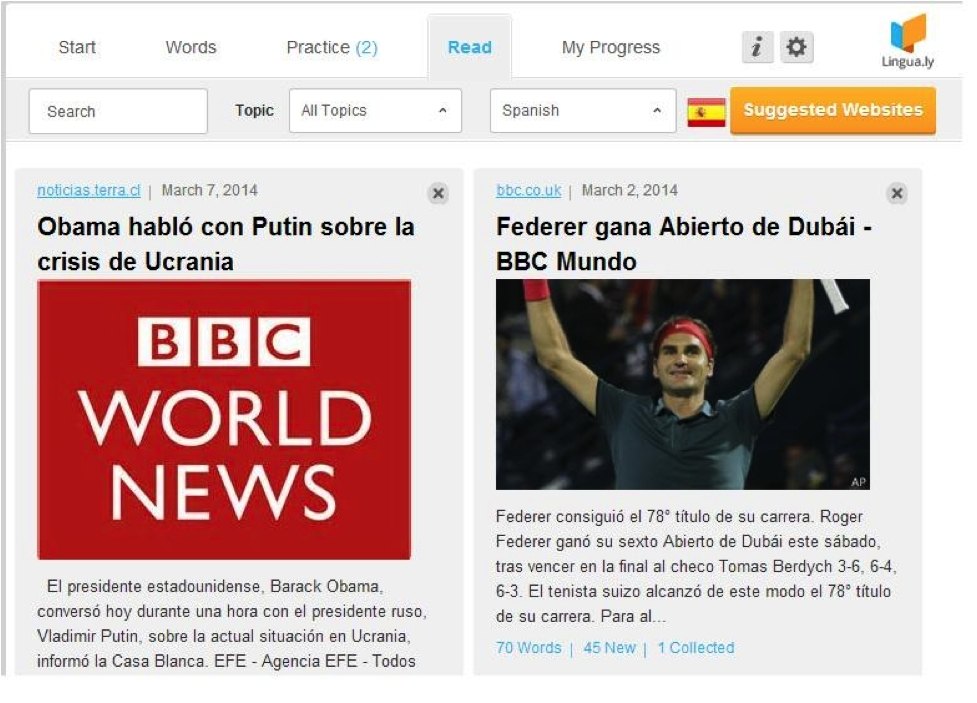The Top Foreign Language Learning Apps For Kids
These days, most employers are looking for staff who know at least one foreign language. So, having this skill under one's belt is a good way to start a successful career. Learning another language may be a tough undertaking for many adults, but for children, it presents no difficulty. The younger the age of a child, the better he or she absorbs new material. While twenty or so years ago the stock of second language learning aids was somewhat limited, in our digital era teachers and parents have a huge number of technical means at their disposal. Some of the most effective of those are computer programs, which now can be run almost on any device and from any location. Here is a brief review of foreign language learning applications suitable for children of different ages and parents with different financial capabilities.
1. Endless Spanish
- Language: Spanish
- Price: Bundle of all Word Packs 1-4 $11.99
- Age: From 4 years old
If you want your kid to learn the language of Miguel de Cervantes, start from Endless Spanish. This engaging and entertaining app teaches kids to learn Spanish sounds by giving them a word for each letter of the alphabet. Interesting animations make the program more game-like and appealing to older children. When a word appears on the screen, its letters are jumbled up and moved to different locations. A child needs to tap and drag the letters to one place and arrange them in the correct order to form a word. This is an interactive process; each letter begins moving, twisting, and saying the sound and stands for as soon as the child selects it. It's not about letters only, though. Once they have assembled individual words, kids should drag them to their designated places in a sentence.
There is one drawback. While playing with words and letters is a very good activity for younger kids, working with sentences may turn out to be an overwhelming task for them.
2. Duolingo
- Languages: Swedish, French, Irish, Danish, Turkish, Spanish, Dutch, and many more (23 in total)
- Price: Free
- Age: From 13 years old
Duolingo is a website where children can learn a foreign language. In order to use it, you need to sign up through your Facebook, Google, or email accounts.
Most of the courses at Duolingo have been developed by native speakers of the languages represented on the site. So, it's a good chance to learn a language “first hand.” The website offers many useful features. For example, when a child makes a mistake, he or she is given the correct answer. Then, they can start a user discussion related to the error. They also see “hearts”, which are similar to the number of lives in a video game, and the app tracks the progress a child is making. The lessons incorporate exercises and activities to practice essential skills: listening, speaking, and translation. Obviously, Duolingo is also good for adults who want to learn a new language or improve their foreign language skills. Many teachers find Duolingo a valuable resource to complement regular class activities.
3. Miao Mi - Learn Mandarin Chinese for Kids & Junior
- Language: Mandarin Chinese
- Price: Free for download (a seven-day free trial)
- Age: From 3 years old
The greatest number of people on the planet speaks Mandarin, so it's a good idea to teach it to your kid using the Miao Mi app. This a service that parents can subscribe to after downloading the app and using it free for a week. You will find more than half a thousand videos and a great number of games here. The bulk of those is available in two working languages.
The program comprises three categories. To get familiar with the new lexical material, your child should visit the “Learn” section. The “Play” category features learning games, while “Watch” contains video series translated into English and Chinese.
The best thing about Miao Mi is the considerable number of short videos in two languages, that gives kids a chance to compare them. Among the pros of the app are excellent, colorful graphics. Drawbacks include mediocre quality of the video clips in terms of engaging content and variety. Also, the repertoire of games in the “Play” section is quite scarce. That said, professionals still recommend the program as a good starting point for learning Mandarin.
4. MindSnacks
- Language: French, German, Italian, Chinese, Portuguese, Spanish
- Price: Free (basic package)
- Age: From 11 years old
Although you will find many words in English, there is a completely different language to be mastered. With MindSnacks, kids can do it in a fun and engaging way. There are no boring grammar or vocabulary exercises. Instead, children can play interactive games (12 in all). For instance, when a kid chooses a correct answer in a vocabulary game, an animated frog devours and corrects the word or phrase. Children can also select a specific topic such as “furniture” and explore it by clicking words and phrases, listening to their pronunciation, and looking at their visual representations.
The app is well-built, colorful, and offers challenging tasks. It also tracks the learners' progress by rewarding them with points and badges. Apart from the general progress, parents can see specific structures and vocabulary their kids have learned.
5. The Very Hungry Caterpillar & Friends - First Words
- Languages: Chinese, English, German, Spanish, French
- Price: $2.99
- Age: From 2 years old
Now, here is something useful for toddlers. This is a kind of digital pop-up book that helps little children learn new words. The graphical interface is quite simple and easy to navigate by even very young kids on their own. However, the app's creators recommend parents to use it together with their children.
The words the book contains are grouped by the subject: animals, birds, fruits, and so on. When a kid selects an image, it turns into letters, and the speaker pronounces the word (parents can choose one or two languages). At the end of a learning session, there is an interactive quiz for the kid on what he or she has learned. That also consists of selecting the right images.
The app has vividly colored graphics and is very interesting for kids. They will be thrilled to see their favorite animals and learn new ones. The only drawback is that words aren't used in a context.
It's true that no computer program will replace a face-to-face communication between a teacher and a student. Still, the learning applications described above can serve as excellent aids in the educational process.









